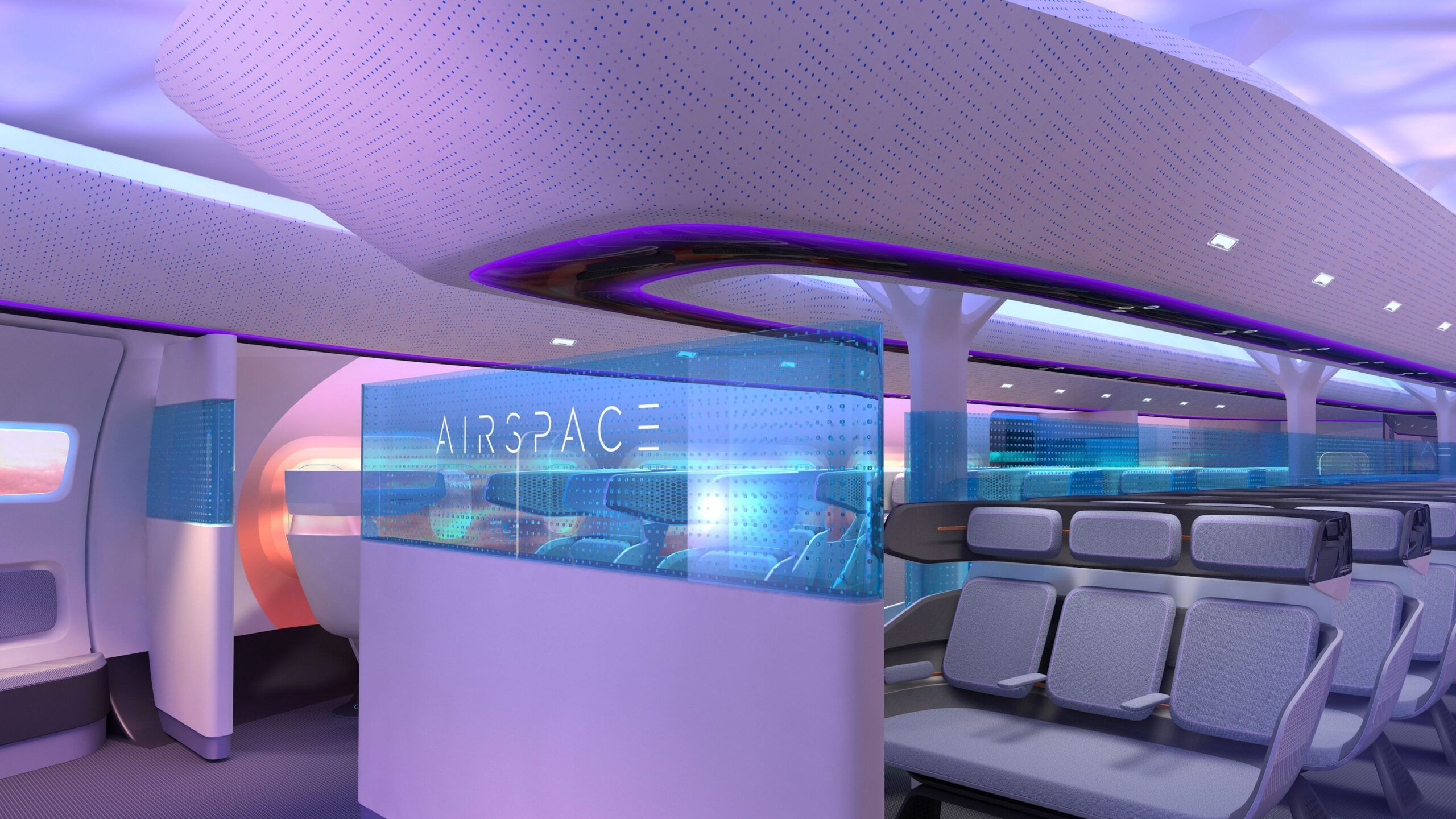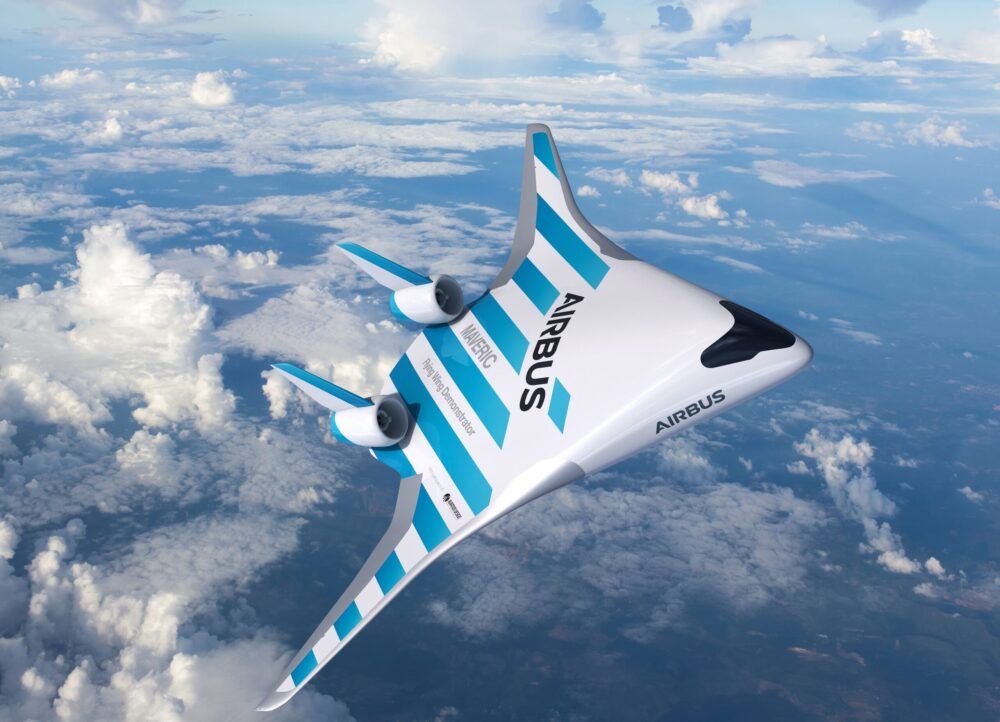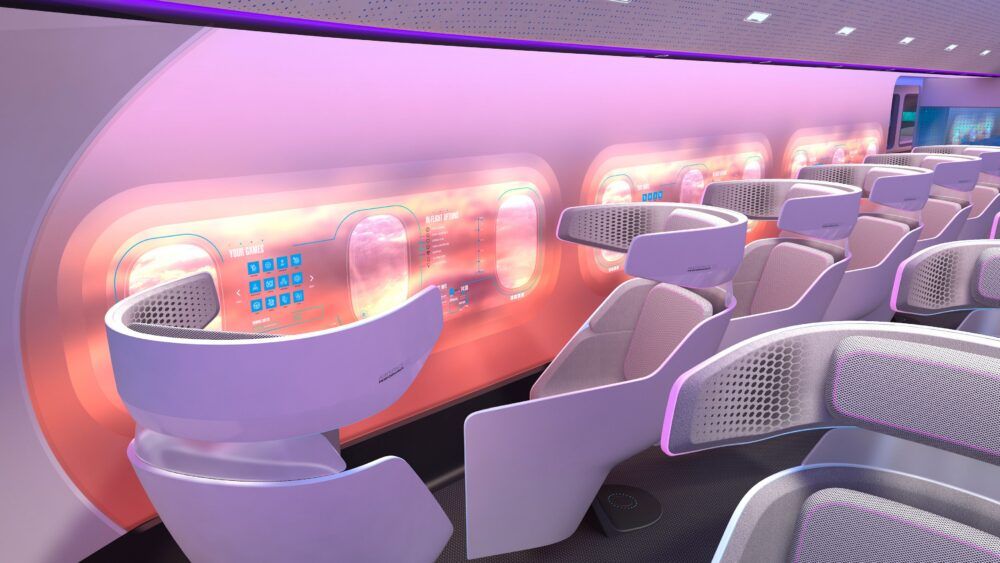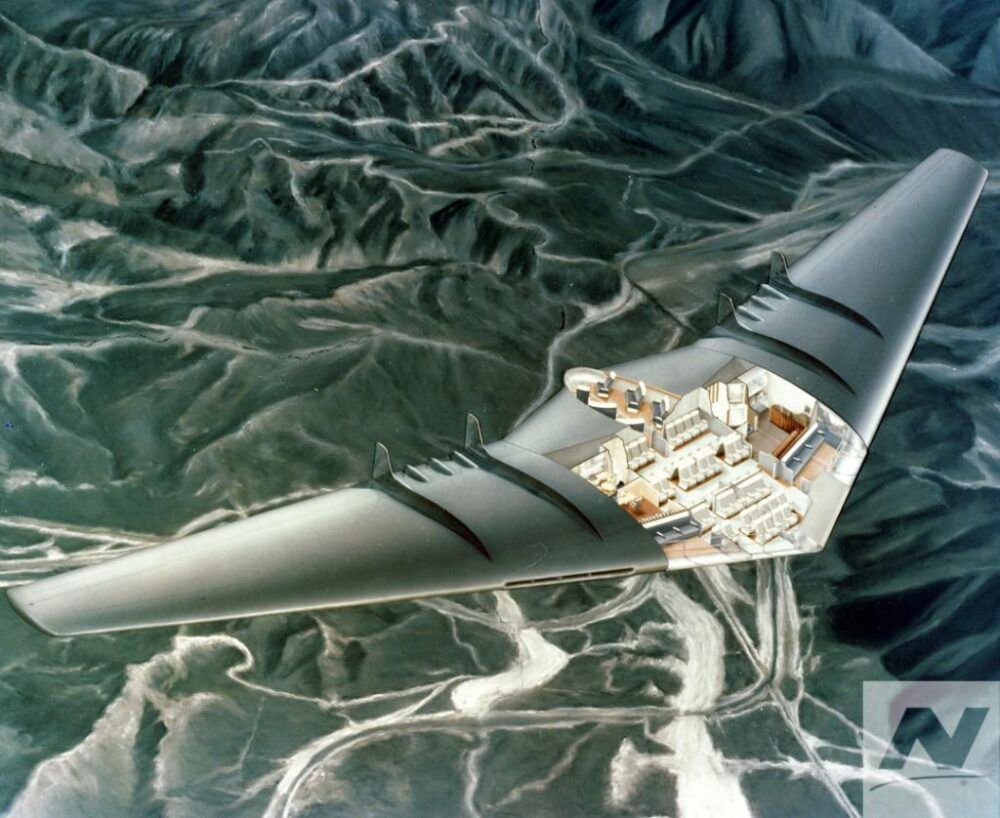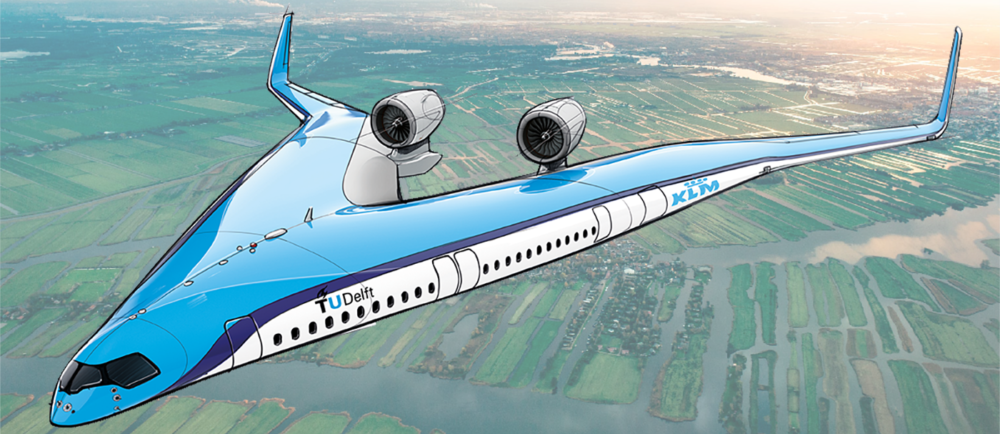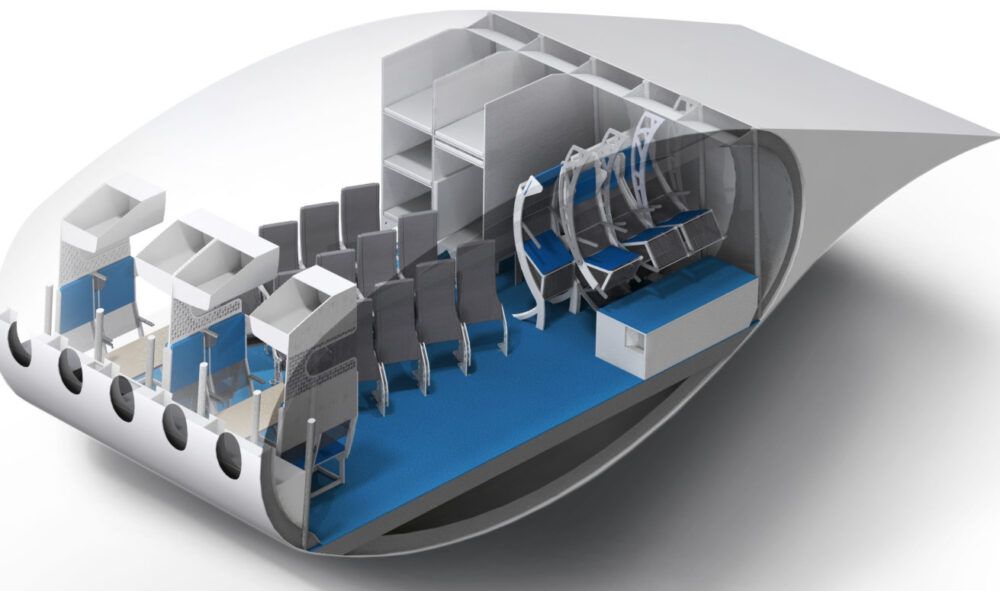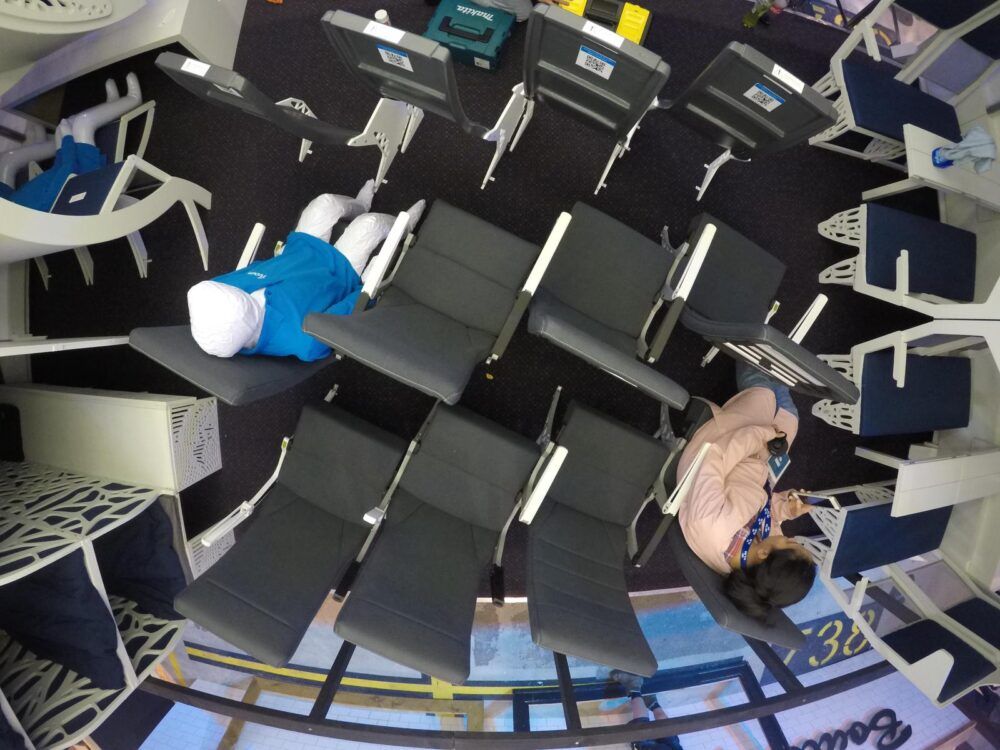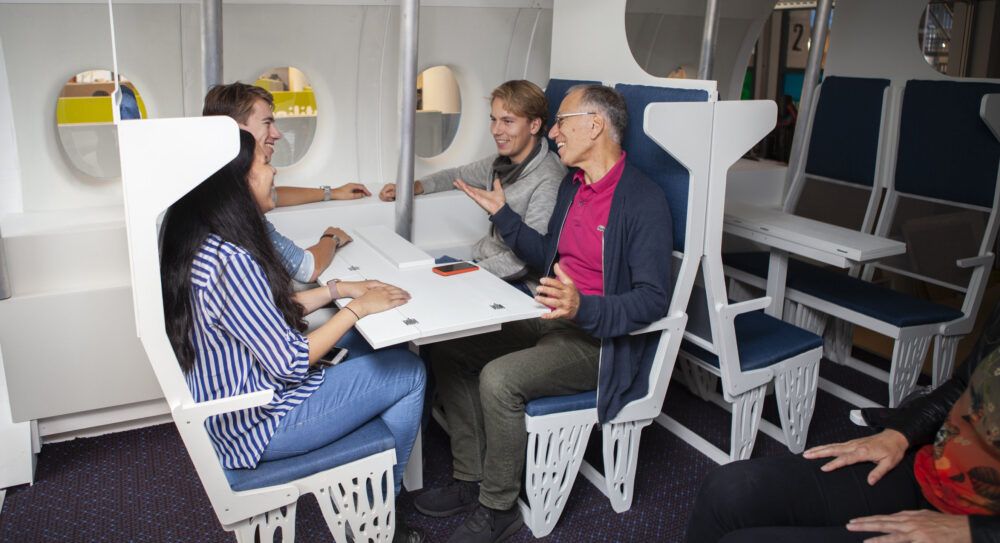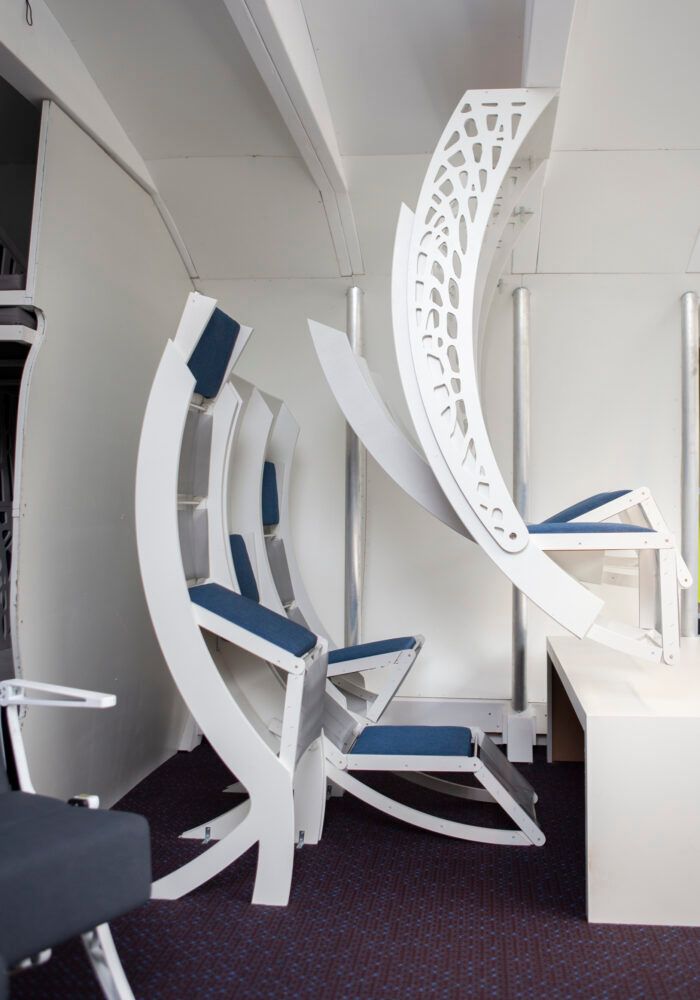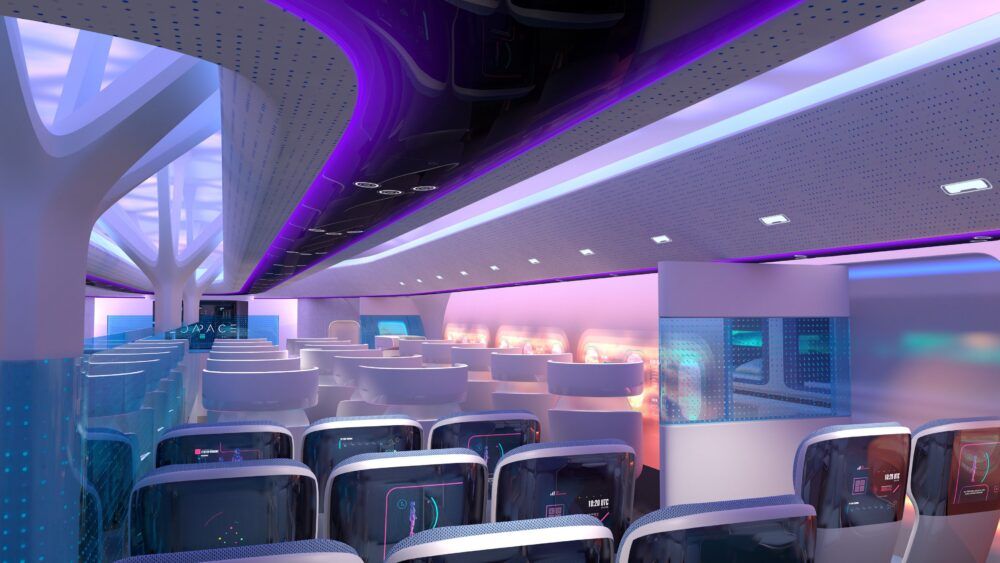When we think about futuristic aircraft designs, the most radical concepts often feature a blended wing. From the semi-blended to the full-on flying wing, these ideas give us hope that, soon, the traditional ‘tube with wings’ might be replaced with something quite different.
But the new shapes and dimensions that are so eyecatching on the outside of the plane are equally game-changing on the inside too. What could we expect from the interiors of these aircraft, and how could it change the future of passenger experience?
Stay informed: Sign up for our daily and weekly aviation news digests.
More space to play with
A blended wing fuselage offers a much more usable interior space. Rather than having everyone crammed against the sidewalls with an aisle in the middle, these would allow for more innovation in terms of how the space is arranged.
Some concepts floated for blended wing aircraft are relatively run-of-the-mill. Airbus’ Airspace concept for its MAVERIC blended wing body aircraft sees fairly typical rows of seats in the center of the cabin, arranged in familiar groups of three. However, rather than segregating flying classes from front to back, the blended wing allows for horizontal segregation instead.
For the Airbus concept, this means placing the business class passengers in the 'window' seats, although the windows are actually projections. Here, it has proposed swiveling business class seats, allowing passengers to be sociable or not as the mood takes them.
This horizontal segregation is a concept that harks back to very early flying wing commercial aircraft conceived by Northrop Grumman. Better known for its B-2 stealth bomber, the company sketched out a potential commercial flying wing back in the 1950s.
Northrop envisaged having the bulk of the passengers in the central cabin, while off to the sides would be lounges, private suites and meeting spaces. They even planned a large glass ‘observation lounge’ to enjoy the vistas below.
But aside from doing away with the front-to-back segregation, how else could these futuristic aircraft be different?
The innovation
With more space and more opportunity, there is room for more innovation. Dutch airline KLM is working with TU Delft on its ‘Flying V’ project, a delta-shaped aircraft with passenger cabins down each side. While this lends itself to a fairly average cabin experience, TU Delft has floated some pretty interesting concepts for the interior.
The curved walls of the V, they believe, could be better utilized as passenger bunk beds than seats. Other ideas included café-style social tables, reclining ‘hanging’ seats for sleeping and relaxation, and staggered economy seats to do away with the armrest wars.
TU Delft wasn’t the only one thinking about innovative designs, however. In one Airbus mockup for the MAVERIC, we can catch a glimpse of something rather interesting in the wall of the aircraft. Just behind the divider in the image below, there appear to be bunk beds built into the wall.
These could be for crew, but could also be a passenger feature, maybe bookable by the hour or as an add-on for the entire flight.
While the shape of the aircraft cabin of the future remains up for development, the changing shape of aircraft bodies could see some exciting innovations.

